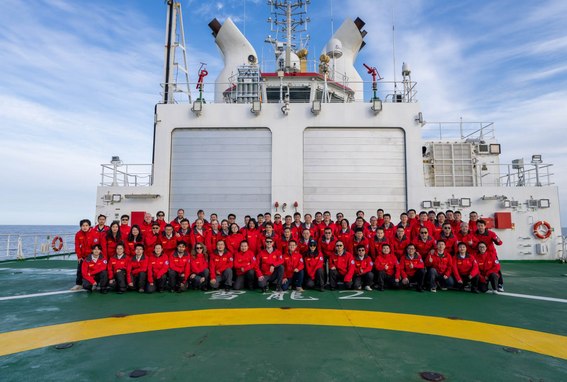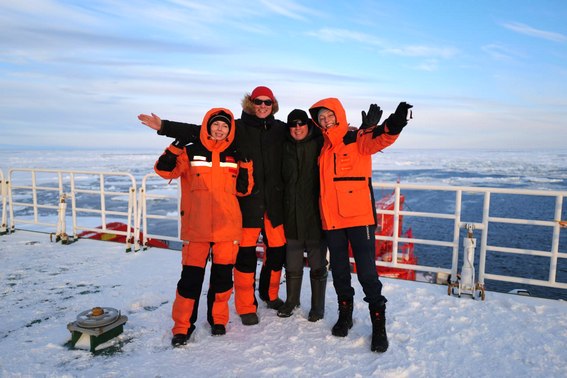It seemed quite recently that we wrote (https://t.me/karpinskyinstitute/2280) that the Chinese research icebreaker "Xue Long 2" left the Russian port of Murmansk and was on its way to the Arctic.
And now it has returned, but already to the shores of Petropavlovsk-Kamchatsky. The vessel's entry into Russian waters marked the end of the international JASMInE-2 expedition in the Arctic Ocean.
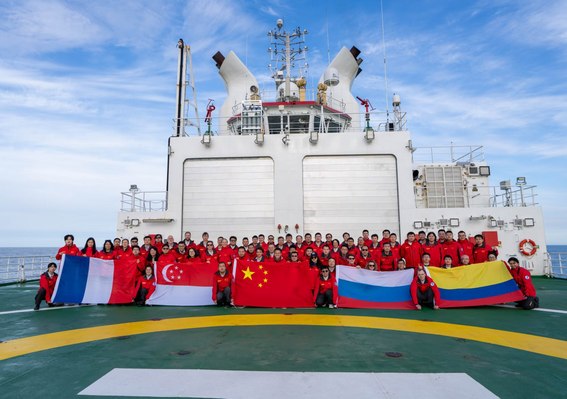
Of the 27 participants in the Joint Arctic Scientific Mid-ocean Ridge Insight Expedition (JASMInE), 9 Russian scientists - geophysicists and geologists - worked on board the icebreaker.
Igor Neevin, head of the Centre of Marine Geology, Leonid Budanov, research associate of the Centre of Marine Geology, Tatiana Yavarova, 1st category geophysicist of the Department of deep geophysical studies, and Anna Tokareva, PhD student, participated in the survey cruise from the Karpinsky Institute.
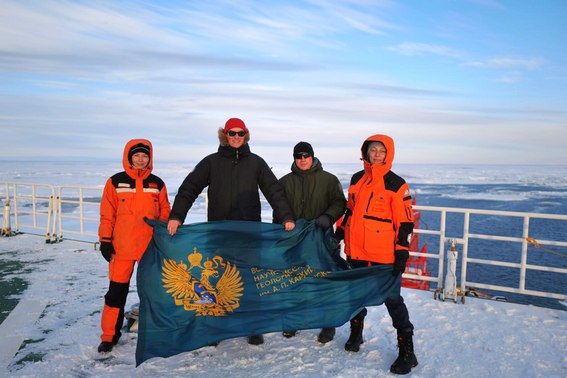
The expedition was aimed at studying the deep structure of the Eurasian basin.
The most recent geological and geophysical methods were used in the studies. The water column was probed with the measurement of physical parameters (CTD probe), and a Rosetta-type sampler with multiple bathometers was used to collect water samples from various specified horizons, including the near-bottom at a depth of over 4,000 m on the Gakkel Ridge.
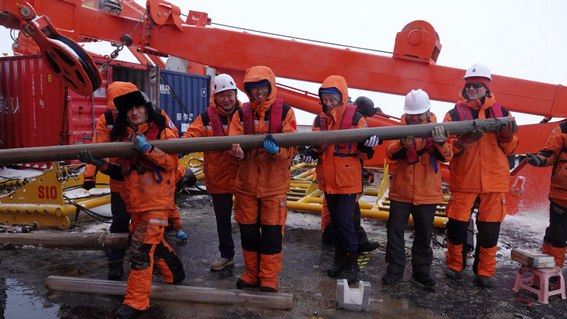
Geophysical studies included deep seismic sounding with multi-component wavefield recording (OBS), magnetotelluric sounding (OBEM), and gravimetric observations. Despite the difficult ice conditions, all planned OBS stations were installed. After successful exciting elastic vibrations using a group of four air guns with a total volume of over 130 liters, 100% of the seismic stations were collected.
At the same time, bathymetric surveys using multibeam echosounder and continuous seismo-acoustic profiling using a deepwater profiler were carried out as the vessel moved. Geological sampling with a gravity tube in the Gakkel Ridge rift valley was also included.
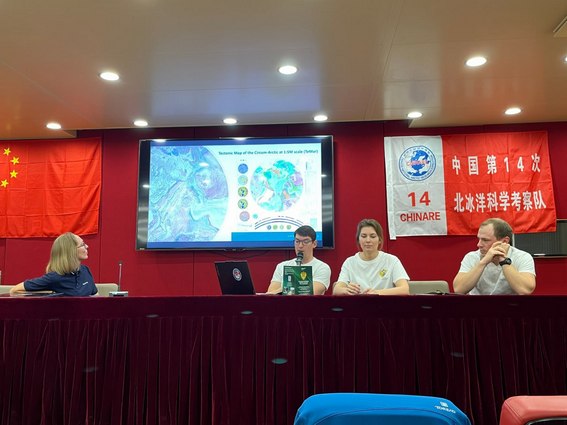
The survey cruise participants also made a series of presentations as part of the 14th Arctic Floating University. The presentations were made by professors from research institutes involved in the expedition from Russia, China, Colombia, Singapore and France. The first presentation was made by Academician of the Chinese Academy of Sciences - Jiabiao Li. He spoke about the PRC's successes in studying ecosystems of polar regions. Three presentations were made by participants from the Karpinsky Institute:
